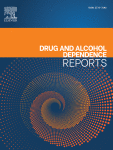By C.J. Valaseka , Samantha A. Streuli a, Heather A. Pines , Steffanie A. Strathdeec , Annick Borquez , Philippe Bourgois , Tara Stamos-Buesige , Carlos F. Verac , Alicia Harvey-Verac , Angela R. Bazzi
Background: People who use drugs (PWUD) in the San Diego, USA and Tijuana, Mexico metroplex face high overdose risk related to historic methamphetamine use and relatively recent fentanyl introduction into local drug supplies. The personal overdose experiences of PWUD in this region are understudied, however, and may have been influenced by the COVID pandemic. Methods: From September-November 2021, we conducted 28 qualitative interviews among PWUD ≥18 years old sampled from an ongoing cohort study in the San Diego-Tijuana metroplex. Interviews explored overdose experiences and changes in the drug supply. Thematic analysis of coded interview transcripts explored overdose experiences, perspectives on drug supply changes, interactions with harm reduction services, and naloxone access. Results: Among 28 participants, 13 had experienced an overdose. Participants discussed rising levels of fentanyl in local drug supplies and increasing overdose incidents in their social networks. Participants discussed a general shift from injecting heroin to smoking fentanyl in their networks. Participants’ most common concerns included having consistent access to a safe and potent drug supply and naloxone. Conclusion: Participants prioritized adapting to drug supply changes and preventing overdose compared to other health concerns, such as HIV and COVID-19. Efforts to address overdose in this region could benefit from drug checking services and expanded, equitable delivery of naloxone.
Volume 7, June 2023, 100154, Drug and Alcohol Dependence Reports


























